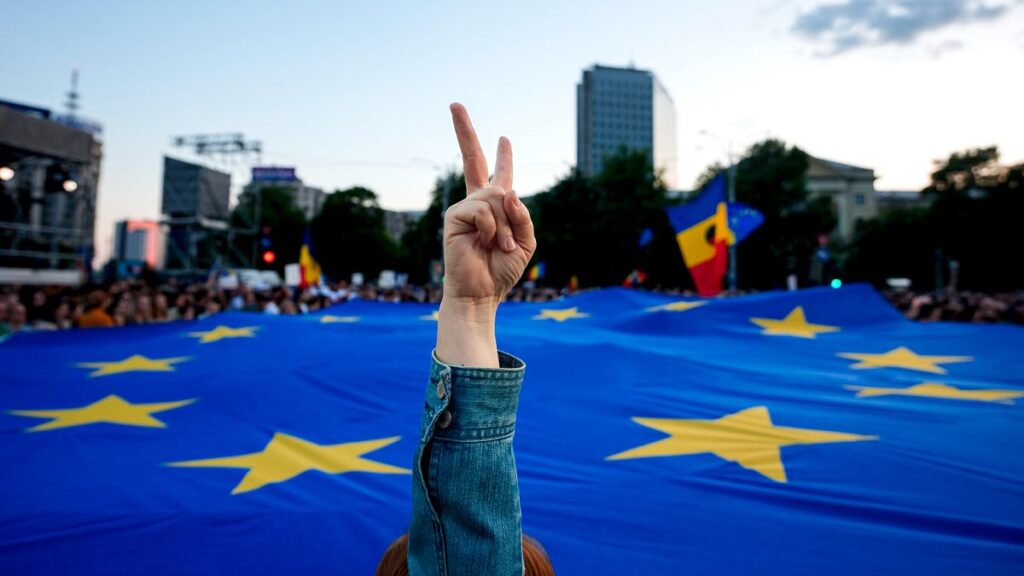Published on
Europe is celebrating its flag:
Twelve golden stars, explicitly, and in contrast to some national flags, not representing member states or units but “the ideals of unity, solidarity and harmony among the peoples of Europe”, how the European Commission website puts it.
In 1983, towards the tail end of its first legislature as a directly elected law-making body, the European Parliament decided to adopt it as the symbol of what we now know as the EU but was then still known as the European Communities.
Two years later, the European Council, the representatives of the then ten member states, approved the decision and by 1986, having just been joined by Portugal and Spain, the flag – officially only called a “logo”, to avoid too strong connotations of nationhood – became widely used by the Communities and member states on official buildings, etc.
However, that’s not where the story of the flag starts, which is now perhaps most powerfully applied as a symbol for freedom and self-determination by nations struggling to achieve them.
Design ideas had been floated even before WWII for a flag for a united Europe, and in its aftermath, naturally, even more so. They ranged from a green cross on a white background and vice versa, to a white triangle on a variety of backgrounds, and even a combination of all colours of all European flags in five fields, arrived at in painstaking statistical analysis by a citizen of Strasbourg.
Neither of them were adopted, but it was in Strasbourg in 1953 that the now familiar flag was first proposed by members of the Council of Europe. The institution as a whole then adopted it in December 1955.
Thus, it can celebrate another round birthday later this year.
Read the full article here

